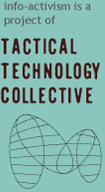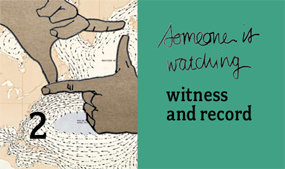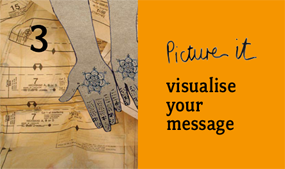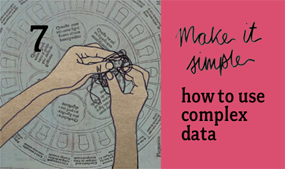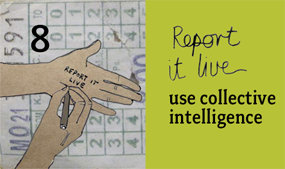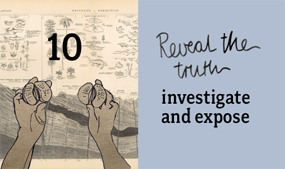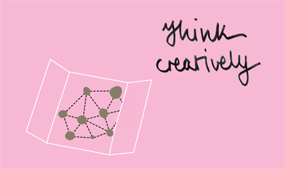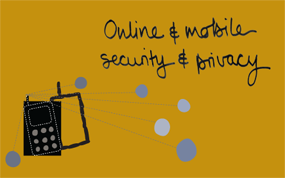The Bell Bajao campaign was conceived by Mumbai-based NGO, Breakthrough, to mobilise men in India to take a stand against domestic violence. The campaign has been led by intensive mass media outreach: a series of public service announcements (PSAs) for Indian radio, television and print. “Bell Bajao” translates as “ring the bell” which is the message that informs the whole campaign: anyone can help stop domestic violence by being proactive and drawing attention to it. The PSAs all show examples of men and boys who have witnessed domestic violence within their communities and intervened. (watch a video here)
The campaign was borne out of intensive research on this issue in India. Sonali Khan, from Breakthrough, says the baseline survey they conducted in 2008 indicated that they needed to take a new angle on domestic violence and “begin engaging men and boys in a more proactive and positive role as part of the solution rather than the problem.” This evidence-based approach to a very timely issue, the Domestic Violence Act having been passed in 2005, secured the backing of India's Ministry of Women and Child Development. The ministry's decision to take ownership of the campaign and brand it, says Sonali, enabled the campaign to gain great momentum through state radio and television and ultimately, it was “responsible for the majority of publicity the campaign got”.
As a small organisation, with a core team of only 13 staff, Breakthrough have established a methodology where external collaboration and partnerships are essential to the growth of a campaign. The well known advertising agency, Ogilivy & Mather, helped develop the Bell Bajao concept as a pro-bono project and Breakthrough have also partnered with a variety of “unlikely partners”-- from theatre performers to fashion designers – to increase the visibility of their campaign and reach as wide audience as possible. While Breakthrough TV ensure that all the content they output is controlled by their core staff, they rely on partners when it comes to public awareness raising events such as the mobile video van which toured around India stopping in different towns and villages, showing the PSA videos and teaching – through games and theatre – young people about domestic violence.
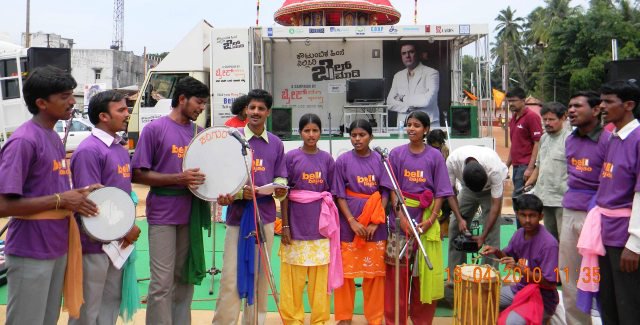
TOOLS USED: video, radio, print media, various social media tools Bell Bajao website and blog.
COST: Production cost for the PSAs; concept done for free by Ogilivy.
REACH: Breakthrough approximates that the campaign has reached 124 million people. This number is calculated from all PSA broadcasts, film festivals, press coverage, Bell Bajao's website, social networking sites and email newsletter, public events and the use of their materials by other organisations. For more information on how Breakthrough has measured the impact, visit their website.
RESOURCES: advertising agency Ogilivy as a pro-bono agent; backing from the Ministry of Women and Child Development; a substantial network of local partners
LEVEL OF DIFFICULTY: While creating a campaign of such scale and building partnerships is hard work, Bell Bajao's model is an easy one to replicate.
LINKS: www.bellbajao.org; see all the video's on Breakthrough's YouTube channel; for information on their online strategy, see a presentation by Sanjukta Basu on “The Bell Bajao Blog: A Social Media Case Study”
Image: The street theatre performers who toured with the video van. Photo taken Bell Bajao Facebook page.

